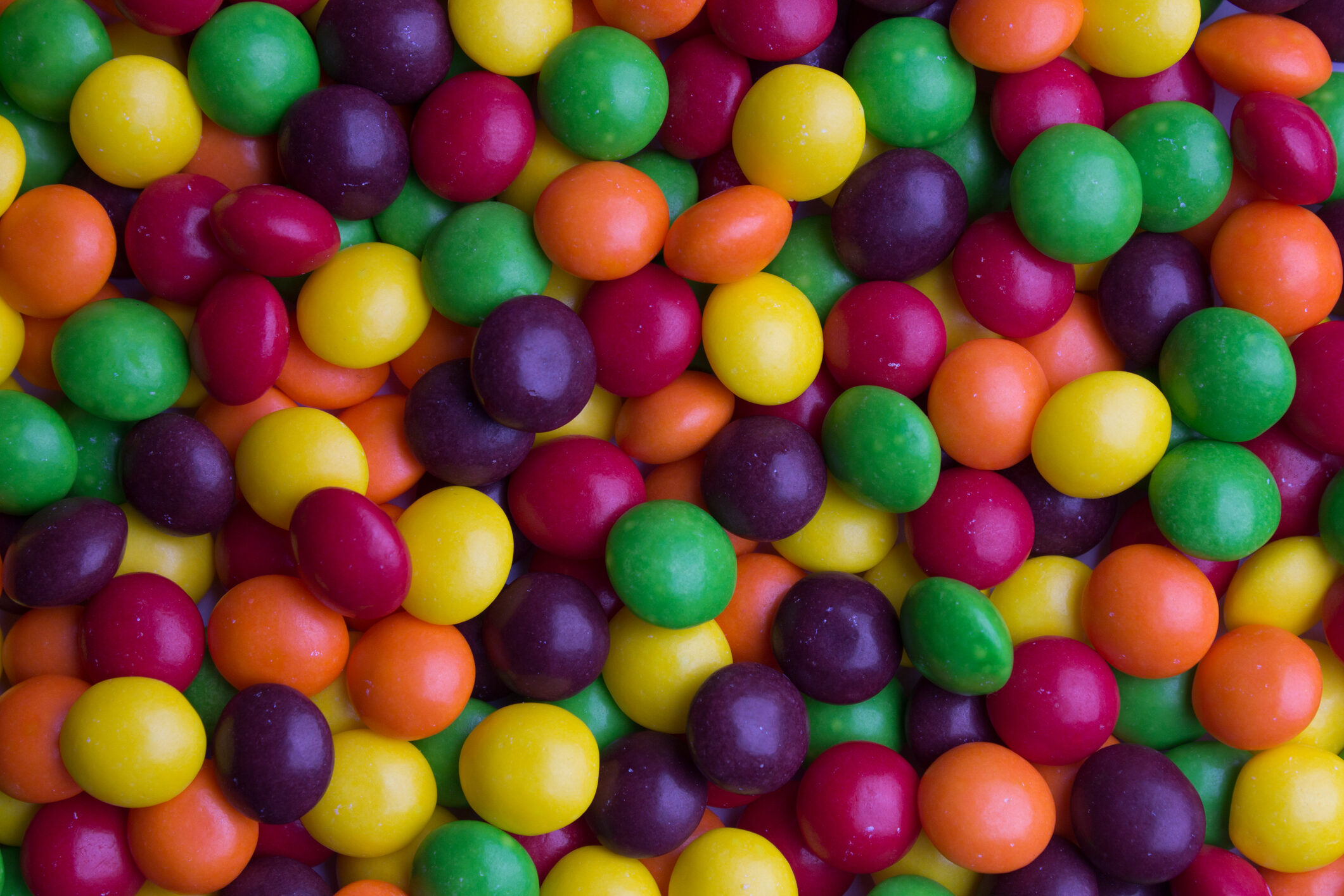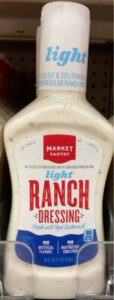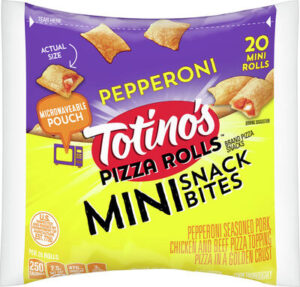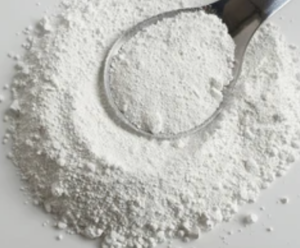Do not trust the process
I’ve written several Health Yourself columns for Michigan Today warning against excessive intake of processed and ultra-processed foods (UPF). Limiting UPF is one way to foster optimal health. My column titles are self-explanatory:
- Should you be eating organic?
- Eat real food, not ingredients
- Where’s (sweet) Waldo?
- Food as medicine
- Food as medicine, II
More and more data illustrate the deleterious effects processed and ultra-processed foods have on human health. It is a chore to keep pace with the research that continues to pile up. The effects are widespread and cumulative, so it’s essential to try and limit the amount of UPF consumed.
The quantity of UPF Americans consume is increasing. Data from the U.S. federal government recently showed the proportion of UPF in Americans’ diet grew from 53.5% of calories in 2001-02 to 57% in 2017-18, while consumption of whole foods fell from 33% to 27% of calories, primarily due to people eating fewer fruits and vegetables.
In another study, investigators examined representative dietary records of more than 100,000 French adults for five years. People who consumed more UPF had higher risks of cardiovascular disease, coronary heart disease, and cerebrovascular disease. These results remained statistically significant even after being adjusted for the nutritional quality of the diet, considering factors such as saturated fat content, sodium, sugar, and dietary fiber. While not proving cause and effect, this study and other research suggest a strong and positive association between UPF and heart disease. Other recent data support this conclusion.
Just recently, a new large-scale prospective cohort study found that for a total of 717,333 person-years of follow-up (median 10 years), higher consumption of UPF associated with a higher risk of dementia. Substituting unprocessed or minimally processed foods for UPF was associated with a lower risk of dementia, Alzheimer’s disease, and vascular dementia, respectively.
Identifying unprocessed, processed, and ultra-processed foods
Identifying processed and ultra-processed foods seems easy at first. Still, it is challenging to know precisely what specific chemicals within the different UPFs are the culprits promoting inflammation and disease. Labeling requirements often are not required, or they are misleading. Manufacturers often list “color added,” “emulsifiers,” or other vague terms instead of identifying the specific chemicals used.
- Unprocessed or minimally processed: These are whole foods with their vitamins and nutrients intact, consumed in their natural condition. Foods can be minimally altered by removal of inedible parts, drying, crushing, roasting, boiling, freezing, or pasteurization to make them suitable for storing and consumption.
Examples: Vegetables, fruits, grains, meat, and dairy - Processed: These foods are made by adding salt, oil, sugar, or other substances. Most processed foods have two or three added ingredients.
Examples: Cheese, canned fish, canned beans. - Processed culinary ingredients: These are substances obtained directly from nature or from processed or minimally processed foods by pressing, refining, grinding, milling, or spray drying.
Examples: Vegetable oils (e.g., olive oil), butter, sugar, salt, and molasses. - Highly processed or ultra-processed: These foods are made mostly from substances extracted from other foods, such as fats, starches, added sugars, and hydrogenated fats. They may also contain additives like artificial colors and flavors or stabilizers.
Examples: Soft drinks, chips, chocolate, candy, ice-cream, sweetened breakfast cereals, packaged soups, chicken nuggets, hotdogs, and french fries.
In addition to the information above, I’m offering three examples below, pulled from a possible list of thousands of highly processed foods that contain a host of artificial ingredients that are not listed on the food label. I’ve included the manufacturers’ food label information and the “non-listed additives,” coloring agents, and other added products. I’ve included links for each of the additives. The number of unlisted additives is startling!
Food Club Fat-Free Sour Cream
Listed Ingredients: Grade-A skim milk, modified corn starch, propylene glycol monoester, xanthan gum, cellulose gel, less than 2%: natural flavoring, vitamin A, cultures, enzymes.
Unlisted additives:
- E171 – Titanium dioxide
- E406 – Agar
- E415 – Xanthan gum
- E410 – Locust bean gum
- E202 – Potassium sorbate
- Added vitamins:
- Vitamin A
- Added minerals:
- Sodium phosphate
Market Pantry Light Ranch Dressing
Listed ingredients: Soybean oil, water, sugar, maltodextrin, buttermilk, contains less than 2% of salt, distilled vinegar, egg yolk, modified food starch, phosphoric acid, spices, dried garlic, dried onion, natural flavors (contain milk), disodium phosphate, xanthan gum, monosodium glutamate, disodium inosinate, disodium guanylate, potassium sorbate (a preservative), calcium disodium EDTA to protect flavor.
Unlisted additives:
Totino’s Pepperoni Pizza Rolls
Listed ingredients: Enriched flour (wheat flour, niacin, ferrous sulfate, thiamin mononitrate, riboflavin, folic acid), tomato puree (water, tomato paste), water, pepperoni seasoned pork, chicken and beef pizza topping (pork, mechanically separated chicken, water, soy protein isolate, beef, salt. Contains 2% or less of: pepperoni [pork, mechanically separated chicken, beef, salt. Contains 2% or less of: spices, dextrose, pork stock, lactic acid starter culture, oleoresin of paprika, flavoring, sodium ascorbate, sodium nitrite, BHA, BHT, citric acid], spices, dextrose, oleoresin of paprika, sodium ascorbate, garlic powder, natural flavor, maltodextrin, lactic acid starter culture, BHA, BHT), imitation mozzarella cheese (water, palm oil, modified corn starch, vegetable oil, rennet casein, salt, sodium aluminum phosphate, potassium chloride, guar gum, potassium sorbate [preservative], sodium citrate, sodium phosphate, titanium dioxide [artificial color], maltodextrin, magnesium oxide, zinc oxide, Vitamin A palmitate, riboflavin, Vitamin B12), vegetable oil. Contains Less Than 2% of: modified corn starch, rehydrated fat-free mozzarella cheese (water, skim milk, cheese cultures, salt, enzymes, Vitamin A palmitate, Vitamin B6), sugar, salt, modified whey, defatted soy flour, soybean oil, dried onion, spice, methylcellulose, rehydrated enzyme modified cheese (water, milk, cheese cultures, salt, enzymes), dextrose, maltodextrin, TBHQ (preservative), and natural flavor. Whew!
Unlisted additives:
- E320 – Butylated hydroxyanisole (bE321 – Butylated hydroxytoluene
- E331 – Sodium citrates
- E319 – Tertiary- butylhydroquinone
Added vitamins:
Added minerals:
Titanium dioxide (TiO2, E171)
One chemical receiving much attention in the U.S. (and Europe) is titanium dioxide (powder), used as a white pigment found in products such as sunscreens, cosmetics, paints, plastics, and food. The pigment grade is also known as titanium white, pigment white 6, or CI 77891. In food it is known as E171 and used as a color additive, anti-caking agent, and whitener, among other things, and can be found in thousands of food products across a range of categories. These include chewing gums, baked goods, sandwich spreads, salad dressings, and dairy products like cottage cheese, ice cream, and coffee creamers.Sweet treats and candies make up a large share of the food products containing E171. One recent report from the European Food Safety regulators says that E171 is “not safe for human consumption,” and yet the U.S. has not addressed this issue. In fact, it has been nearly 50 years since the U.S. reassessed potential threats from “suspect” chemicals like E171 in foods.
Titanium oxide (E171) is often found in such treats as Skittles, Starbursts, and thousands of other sweets, particularly those marketed to children. A recent class-action lawsuit, filed in July 2022 in the U.S. District Court for the Northern District of California, claims Mars Inc., the maker of these candies, knew about E171’s health problems and publicly committed in 2016 to phase E171 out of its products. Nevertheless, the company continues to sell products laced with E171 in the U.S.
European Union bans titanium dioxide in food
Studies published since the 1960s have raised questions about E171’s safety. A 2015 review of mostly animal (but some human) studies, found that E171 did not pass through the body as earlier research suggested. Instead, it could absorb into the bloodstream via the intestines and accumulate and damage the spleen, liver, and kidneys by increasing the risk of intestinal inflammation, cancer, and immune-system damage. Other research supports these findings and highlights E171’s involvement in the genesis of inflammatory bowel diseases and colorectal cancer.
To be fair, other research suggests that when consumed in small doses E171 is not harmful to humans. And studies that were used to justify banning the ingredient in the European Union contained methodology flaws and should not be trusted.
But after reviewing the scientific literature on E171’s safety, the European Food Safety Authority decided to ban all E171 in food; they said they could not establish a safe level of titanium dioxide for consumption. In 2019, the French government called for a ban of titanium dioxide by 2020.
Britain and Canada disagreed with the European Union’s decision and continue to allow E171 in food, as does the U.S. In fact, the U.S. Food and Drug Administration concluded that available studies, at this time, “do not demonstrate safety concerns connected to the use of titanium dioxide as a color additive.” Many scientists are concerned about this decision since sweet treats and candies contain some of the highest levels of titanium dioxide and are mostly consumed by children. Given children’s smaller bodies and higher relative doses, E171 in their food should be restricted.
How to avoid E171?
The best way to limit E171 and other toxins in food is to select and eat whole foods that don’t contain added coloring or other unneeded chemicals.
It’s best to eat unprocessed, whole foods. And it’s important to eat a variety of real, whole foods that are nutrient-rich relative to their caloric value. These foods come mostly from plants and contain abundant vitamins, minerals, fiber, phytochemicals, and other essential nutrients, and rarely contain additives.
Try to avoid all foods that have “additives or coloring agents” listed on their label — you’ll find these mostly in packaged foods. Instead of packaged treats full of additives and coloring agents, try eating some nuts or different kinds of fresh fruits and veggies.
References
-
- Aengenheister, L, et al. “Investigating the accumulation and translocation of titanium dioxide nanoparticles with different surface modifications in static and dynamic human placental transfer models.” The European Journal of Pharmaceutics and Biopharmaceutics . 2019;142:488.
- Barreau, F., et al. “Titanium dioxide particles from the diet: Involvement in the genesis of inflammatory bowel diseases and colorectal cancer.” Particle and Fibre Toxicology. 2021;18(1):26.
- Beslay, M., et al. “Ultra-processed food intake in association with BMI change and risk of overweight and obesity: A prospective analysis of the French NutriNet-Santé cohort.” PLOS Medicine. 2020;17(8):e1003256.
- Cornu, R., et al. “Ingestion of titanium dioxide nanoparticles: a definite health risk for consumers and their progeny.” Archives of Toxicology. 2022;96(10):2655-2686.
- European Union bans titanium dioxide in food
- Fiolet, T., et al. “Consumption of ultra-processed foods and cancer risk: Results from NutriNet-Santé prospective cohort.” BMJ. 2018;360:k322.
- Huiping, Li, et al. “Association of ultraprocessed food consumption with risk of dementia: A prospective cohort.” Neurology, July 27, 2022 DOI: 10.1212/WNL.0000000000200871.
- Jovanović, B. “Critical review of public health regulations of titanium dioxide, a human food additive.” Integrated Environmental Assessment and Management. 2015;11(1):10.Juul, F., et al. “Ultra-processed foods and cardiovascular diseases: Potential Mechanisms of Action.” Advances in Nutrition. 2021;12(5):1673-1680.
- Pogribna, M., et al. “Effect of titanium dioxide nanoparticles on histone modifications and histone modifying enzymes expression in human cell lines.” Nanotoxicology. 2022;24:1-16.
- Poti, J.M., et al. “Ultra-processed food intake and obesity: What really matters for health-processing or nutrient content? CurrentObesity Reports . 2017;6(4):420-431.
- Srour, B., et al. “Ultra-processed food intake and risk of cardiovascular disease: Prospective cohort study.” The NutriNet-Santé Study, BMJ. 2019;365:l1451.
- Srour, B., et al. “Ultraprocessed food consumption and risk of Type 2 diabetes among participants of the NutriNet-Santé prospective cohort.” JAMA Internal Medicine. 2020;180(2):283-291.
- Weir, A., et al. “Titanium dioxide nanoparticles in food and personal care products.” Environmental Science Technology. 2012;(4)2242.









Francine Dolins
Dear Dr. Katch,
Thank you for writing these health updates. They are always excellent and so helpful.
I’d like to ask if you would be willing to write one on the addition of palm oil into nearly every type of processed (e.g., breads, cakes, cookies, chips, dips, etc.), and personal and household cleaning agents (e.g., toothpaste, shampoos, disinfectants, etc.). Palm oil production is one of the leading causes of climate change, and importantly is a highly saturated fat. Most people don’t realize they are consuming what is essentially the fat content of a high fat butter. Palm oil production is also associated with horrific harm to local and indigenous communities in Malaysia, Indonesia, Brazil, and other tropical countries.
Thank you!
Best,
–Francine Dolins
Associate Professor of Psychology
UM-Dearborn
Reply
P. NATHAN
Spot on! I’ll add “Polysorbate 80”.
Reply
Russell Lyons - 1983
I’m rather puzzled at the “Unlisted additives” that, in fact, appear in the “Listed ingredients”. What is the meaning intended?
Reply
Victor Katch
You are correct. This is my error, my apologies. Here is the correct listing of all ingredients:
Enriched Flour (wheat flour, niacin, ferrous sulfate, thiamin mononitrate, riboflavin, folic acid), Tomato Puree (water, tomato paste), Water, Pepperoni Seasoned Pork, Chicken and Beef Pizza Topping (pork, mechanically separated chicken, water, soy protein isolate, beef, salt, Contains 2% or less of: pepperoni [pork, mechanically separated chicken, beef, salt, Contains 2% or less of: spices, dextrose, pork stock, lactic acid starter culture, oleoresin of paprika, flavoring, sodium ascorbate, sodium nitrite, BHA, BHT, citric acid], spices, dextrose, oleoresin of paprika, sodium ascorbate, garlic powder, natural flavor, maltodextrin, lactic acid starter culture, BHA, BHT), Imitation Mozzarella Cheese (water, palm oil, modified corn starch, vegetable oil, rennet casein, salt, sodium aluminum phosphate, potassium chloride, , guar gum, potassium sorbate [preservative], sodium citrate, sodium phosphate, titanium dioxide [artificial color], maltodextrin, magnesium oxide, zinc oxide, Vitamin A palmitate, riboflavin, Vitamin B12), Vegetable Oil. Contains Less Than 2% of: Modified Corn Starch, Rehydrated Fat Free Mozzarella Cheese (water, skim milk, cheese cultures, salt, enzymes, Vitamin A palmitate, Vitamin B6), Sugar, Salt, Modified Whey, Defatted Soy Flour, Soybean Oil, Dried Onion, Spice, Methylcellulose, Rehydrated Enzyme Modified Cheese (water, milk, cheese cultures, salt, enzymes), Dextrose, Maltodextrin, TBHQ (preservative), Natural Flavor.
Unlisted additives:
• E320 – Butylated hydroxyanisole (bE321 – Butylated hydroxytoluene
• E331 – Sodium citrates
• E319 – Tertiary- butylhydroquinone
• Added vitamins:
• Sodium-L-ascorbate
• Retinyl palmitate
Reply
Deborah Holdship
The post now reflects this correction.
Reply
florence bishop - 1976
yes;my comment is that ive always tried to take good care of my health and at 65 yrs. young,; Ive noticed one of many vitamins i take daily is Calcium w/ vitamin D3 but the kicker is ; titanium dioxide is added also…i try and take all my vitamins in capsule form.im definately leary about taking my new calcium supplement but i need added calcium to my added health….am i at risk here? thank you….
Reply
Russell Lyons - 1983
How does one find the unlisted additives in a given food?
Reply
Raj Cam - 1993
Thank you Victor for this critical information. I have been buyin a certain brand of milk and cheeses for years for my young kids. How can I find out the unlisted additives?
Are unlisted additives found even in organic products?
Reply